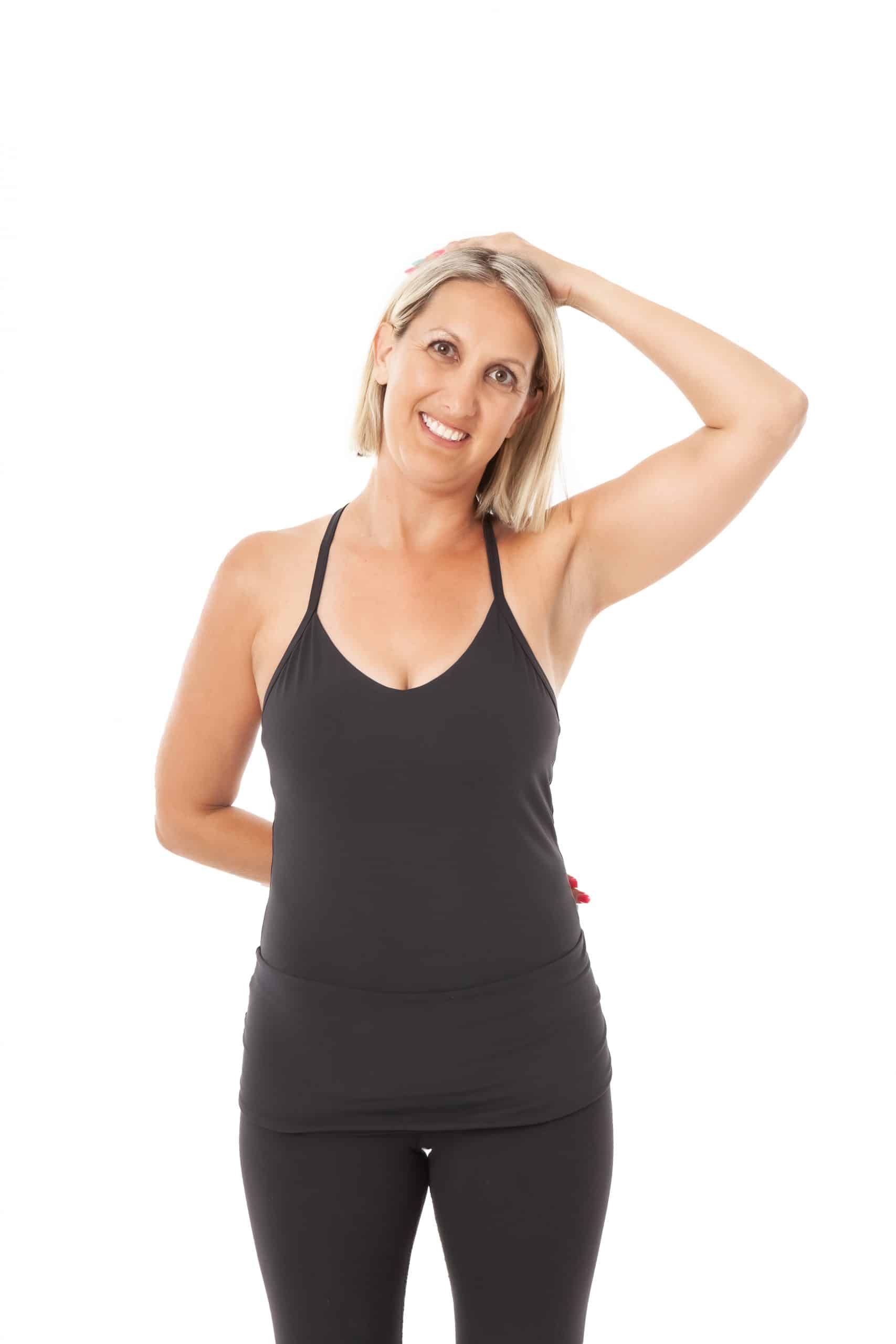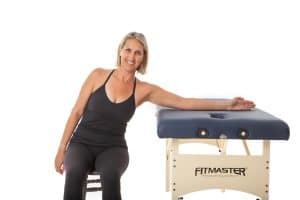Exercise Programming – Thyroid Cancer
Individualized exercise programming helps thyroid cancer patients manage side-effects of surgery and treatment.
John received a referral for a woman with early stage thyroid cancer. He’s been a Cancer Exercise Specialist for six months but has not had any experience working with thyroid cancer. He asked if he could hire me to help her with custom exercise programming and teach him how to put together Jen’s exercise program. He completed her initial assessment and health history and shared the following information with me: Jen is 34years old and a yoga instructor.
Jen is 5’7″ and 171 lbs. She has 22% body fat. She had been teaching 10 classes per week prior to her diagnosis. She was diagnosed with thyroid cancer in December 2019 and had a total thyroidectomy with node biopsy the same month. She underwent radioactive iodine treatment in January 2020. She is struggling with fatigue, weight gain, and self-confidence. Her BP is 110/70 and her RHR is 63.
 John conducted a comprehensive assessment.
John conducted a comprehensive assessment.
1. Jen has moderate to severe upper-crossed syndrome.
2. Her left shoulder is slightly elevated.
3. She has limited shoulder flexion and abduction in her left arm
4. She has a moderate to severe anterior pelvic tilt
5. Her right knee is laterally rotated and per her Thomas test, she has tight right ITB and quad.
6. She complains about knee pain when she teaches her classes. Her hip flexors are extremely tight on both sides.
7. She has excellent balance
Since the thyroidectomy Jen has been fearful of moving her neck because she is afraid of opening up the incision. John believes that this has contributed to the compensations that have led to her poor upper body posture and limited ROM in the shoulder.
I started by compiling my own notes and breaking everything down for John one step at a time.
1. Because she underwent a total thyroidectomy she will be on thyroid hormone replacement for the rest of her life. She and her doctor are still struggling to find the right dosage. She has been fatigued and has gained 20 lbs. since having her thyroid removed.
2. Because of her upper-crossed syndrome, Jen needs to stretch both her pecs and lats while strengthening the scapular stabilizers. She should avoid pushing exercises like push-ups and chest press and focus on shoulder retraction/depression, rowing, and maybe reverse flyes.
3. Because her left shoulder is elevated, John recommends a variety of neck stretches to alleviate what appears as tension in the musculature.
4. Because she had a few lymph nodes removed in her neck, John is including upper body lymph drainage exercises in her workouts and suggesting that she does them daily to prevent lymphedema. He also gives her a list of ways to prevent lymphedema and educated her on the subject (she had no idea what lymphedema was, let alone that she would be at risk for it).
5. John is concerned about the lateral rotation of the knee and hip on the right side and how continuing with improper tracking can lead to future degeneration and injury.
6. Jen may have an elevated risk of hypocalcemia if her parathyroids were affected by the surgery. John is planning on incorporating strength training to increase her bone density as well as her metabolism with a greater percentage of lean muscle.

Next John will have Jen work on shoulder range of motion (ROM) exercises for flexion and abduction. He will instruct her to do forward and side wall walks each day. She should only go to the point of mild discomfort – never pain. When she has 90% of normal ROM, she can begin doing resistance training in each of those planes. Until that time she should also avoid holding any yoga poses that would require full ROM in flexion or abduction and perform a fluid movement instead.
To correct her rounded shoulders, she will begin with a door stretch (holding it for 30 seconds) followed by isometric shoulder blade retractions. As her body adapts to the new exercise program John will move toward a gentle chest fly without weight and gradually increasing repetitions and resistance so he does not cause her to overload her system which may increase the risk of lymphedema. To balance out her upper body, he will add one back exercise to begin with. Reverse flys with a figure 8 band are a great choice. He will have her start with the lightest band and just a few repetitions, making sure there is no swelling following her workout. If everything is good, they will continue to add resistance and repetitions. They will gradually add more upper body exercises over time, but it is important to go slowly as they do not know what her “new” lymphatic system can handle.
John concluded from the Modified Thomas Test that Jen’s anterior pelvic tilt was caused by tight hip flexors and weak glutes. He will start her off with bridges – holding at the top of the movement for 5 seconds while actively contracting her glutes. She will repeat this 10-12 times. As time moves on, he will add hip extension exercises on the cable machine as well as additional hip flexor stretches.
Because her knees are laterally rotated, he also has her do a set of bridges with a cushion between her knees and has her actively squeeze her thighs together for 5 seconds at the top of the bridge. She will repeat this 10-12 times.
He also has her doing wall squats with a ball in the small of her back for lumbar support. He places a yoga block between her knees and tells her to squeeze it throughout the motion. She will repeat this 10-12 times.
Jen will continue with this beginner workout for about four weeks. During this time she can continue to add more time and intensity for cardio as she tolerates it. Because she is suffering with fatigue, John recommends that she workout 3-4 x per week for about 20-30 minutes.
As her thyroid medicine begins to work , and she has more energy, they will increase the duration and intensity of her workouts. If Jen ever notices swelling in her neck and facial area, she make an appointment to see her doctor to rule out lymphedema.
She wants to get back to teaching yogas as soon as possible. He encourages her to perform restorative yoga twice a week for the first month. They will re-assess her ROM and energy level after that time and decide if she is ready for more.
Learn about becoming a Cancer Exercise Training Institute Cancer Exercise Specialist.


 John conducted a comprehensive assessment.
John conducted a comprehensive assessment.